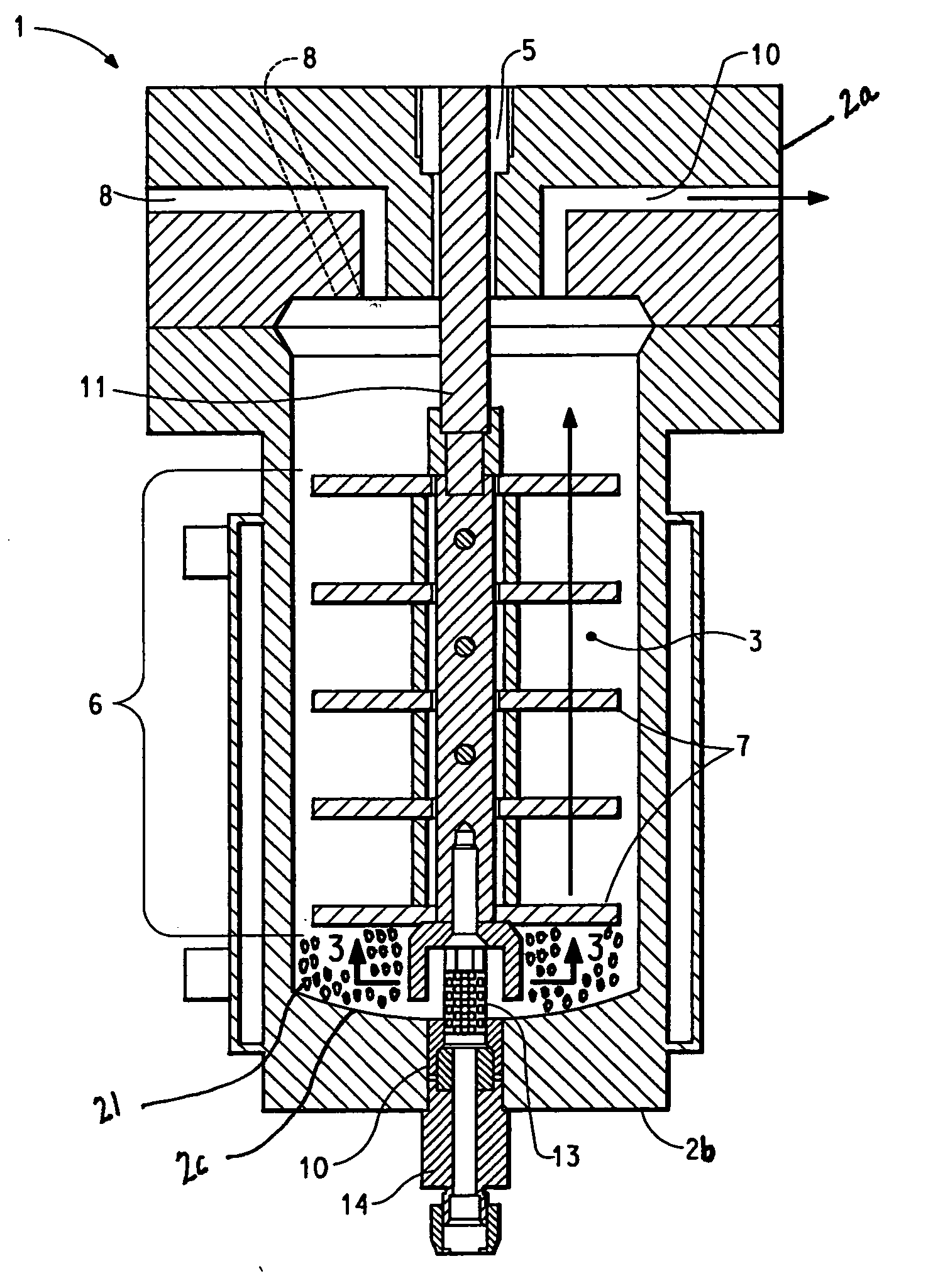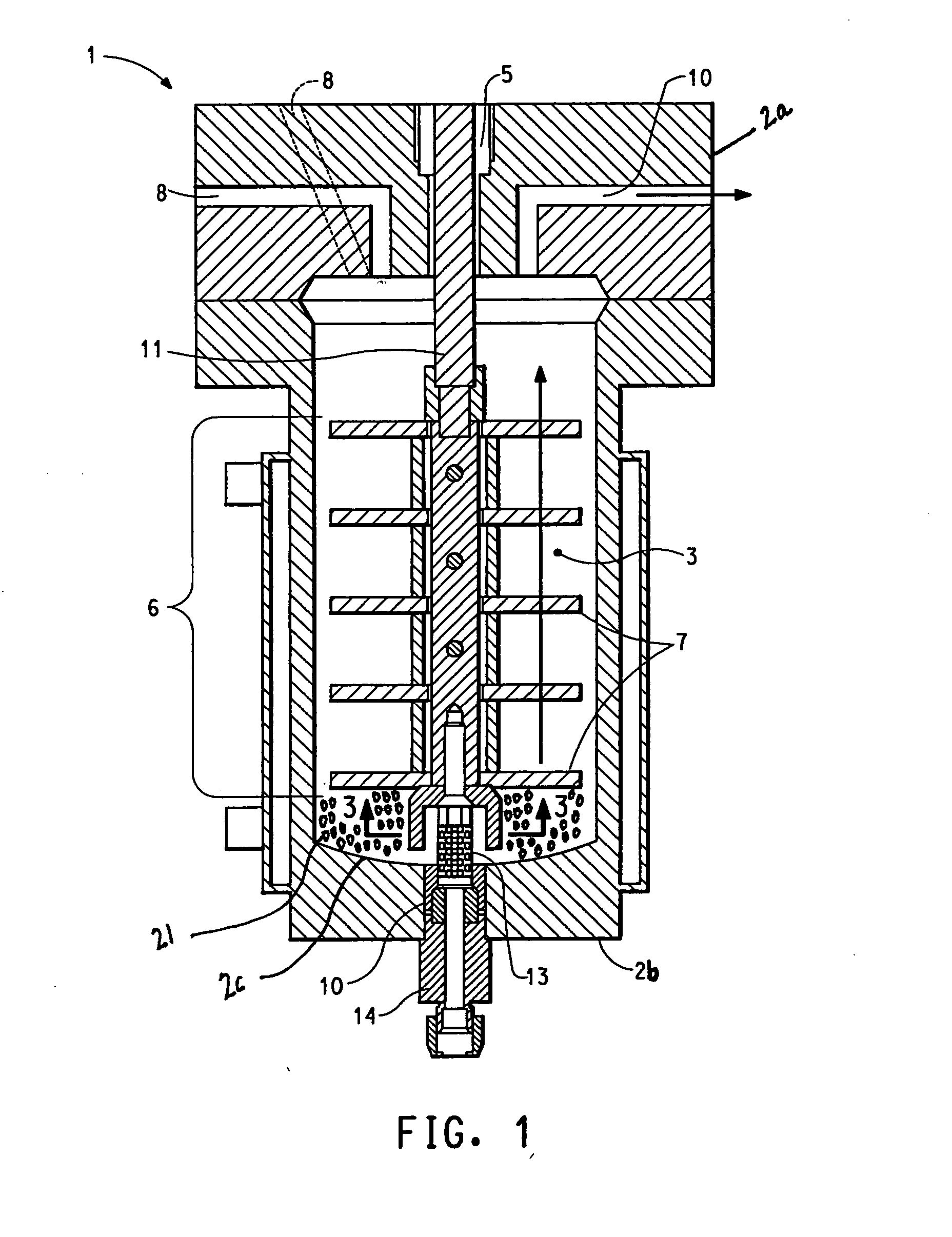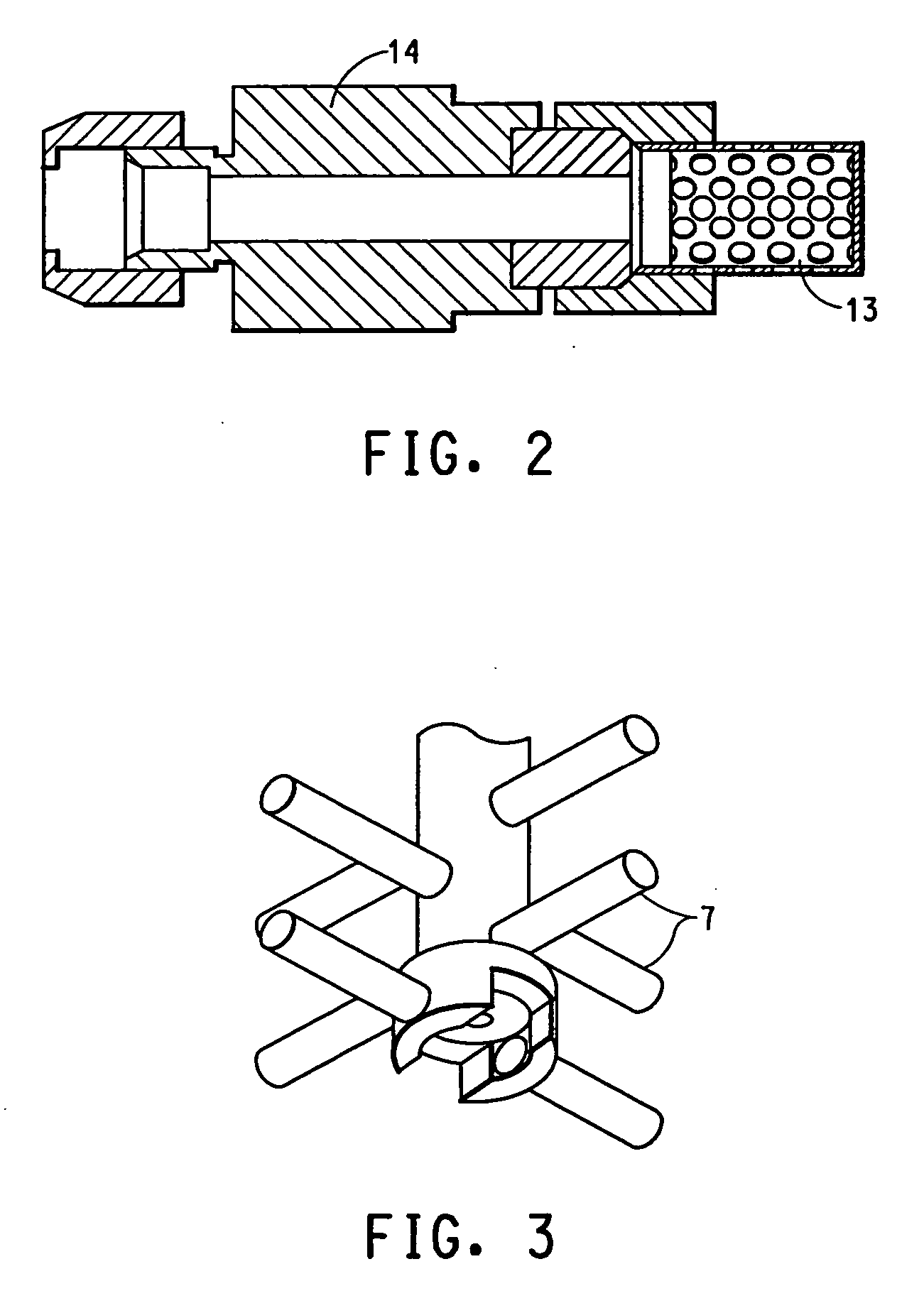High pressure media milling system and process of forming particles
a technology of high pressure media and milling system, which is applied in the direction of powder delivery, capsule delivery, grain treatment, etc., can solve the problems of hardness of some solids, contamination of products, and degradation of heat sensitive materials during grinding, so as to reduce particle size, increase surface area, and improve the effect of purity and uniformity
- Summary
- Abstract
- Description
- Claims
- Application Information
AI Technical Summary
Benefits of technology
Problems solved by technology
Method used
Image
Examples
example 1
Media Milling of Lactose Crystals in Supercritical Carbon Dioxide
[0136] Nylon grinding media with a size of 500 microns (Norstone Inc., Wyncote, Pa., USA) was added to the 1-liter Dupont high pressure media mill, so that 74.4% of the grinding chamber was filled with the grinding media (bulk volume). A physical blend of 100 grams of USP grade lactose (Spectrum Chemicals) and 2 grams surfactant Oleic Acid (VWR) was added to the grinding chamber.
[0137] The mill was sealed and filled with CO2 at supercritical conditions (temperature of 35° C. and pressure of 1450 psi). The dispersion was milled at a mill speed of 1786 RPM for 60 minutes. After completion of the milling, the mill was purged with supercritical CO2 at 800 psi. The grinding media were retained inside the grinding chamber by a 440 micron grinding media retention screen (Swagelok). The milled product particles were entrained in the purging CO2 stream and discharged through the bottom outlet and carried to the high pressure ...
example 2
Media Milling of Ibuprofen in Supercritical Carbon Dioxide
[0139] Ceramic grinding media of a size of 0.8-1.0 microns (Norstone Inc., Wyncote, Pa., USA) was added to the 1-liter Dupont high pressure media mill, so that 70% of the grinding chamber was filled with the grinding media (bulk volume). A physical blend of 100 grams USP grade ibuprofen (Spectrum Chemicals) and 2 grams surfactant Sodium lauryl sulfate SLS (Spectrum Chemicals) was added to the grinding chamber.
[0140] The mill was sealed and charged with CO2 at supercritical conditions (SC) (temperature of 37° C. and pressure of 1450 psi). The dispersion was milled at a mill speed of 1750 RPM for 60 minutes.
[0141] The milling the mill was purged with SC CO2 at 800 psi. The ceramic grinding media were retained inside the grinding chamber by a 440 micron grinding media retention screen (Swagelok). The milled product particles were entrained in the purging CO2 stream and carried to the high pressure filter housing. The product ...
example 3
Media Milling of Lactose Crystals in a Pressurized Pharmaceutical Propellant HFC-134a
[0143] Ceramic grinding media of a size of 0.8-1.0 microns (Norstone Inc., Wyncote, Pa., USA) was added to the 1-liter Dupont high pressure media mill, so that 70% of the grinding chamber was filled with the grinding media (bulk volume). A physical blend of 50 grams USP grade lactose mono hydrate (Spectrum Chemicals) and 1 wt % surfactant sorbitan monooleate Span85 (Spectrum Chemicals) was added to the grinding chamber.
[0144] The mill was charged with liquified pharmaceutical propellant Dymel HFC 134a (Dupont) at a pressure of 1000 psi and a temperature of 21° C. Dymel HFC134a is tetrafluoroethane. The lactose suspension in HFC was milled at a mill speed of 1750 RPM for 60 minutes.
[0145] After completion of the milling, the mill was purged with liquefied HFC at 1000 psi using a bladder system. The grinding media were retained inside the grinding chamber by a 440 micron grinding media retention sc...
PUM
 Login to View More
Login to View More Abstract
Description
Claims
Application Information
 Login to View More
Login to View More - R&D
- Intellectual Property
- Life Sciences
- Materials
- Tech Scout
- Unparalleled Data Quality
- Higher Quality Content
- 60% Fewer Hallucinations
Browse by: Latest US Patents, China's latest patents, Technical Efficacy Thesaurus, Application Domain, Technology Topic, Popular Technical Reports.
© 2025 PatSnap. All rights reserved.Legal|Privacy policy|Modern Slavery Act Transparency Statement|Sitemap|About US| Contact US: help@patsnap.com



